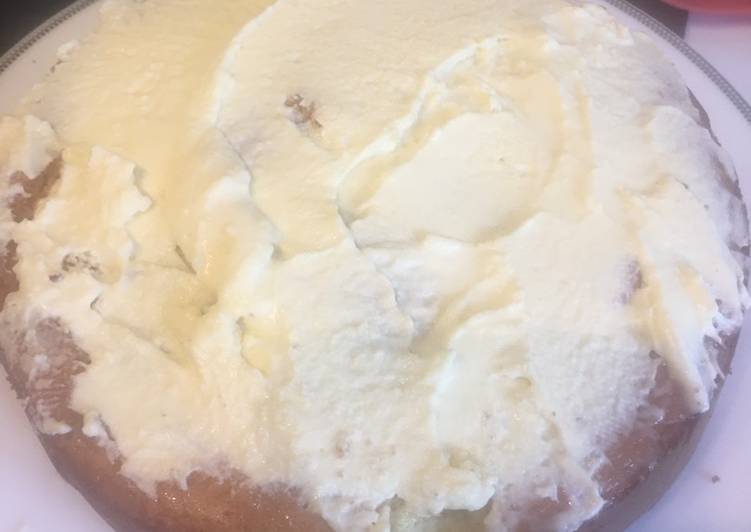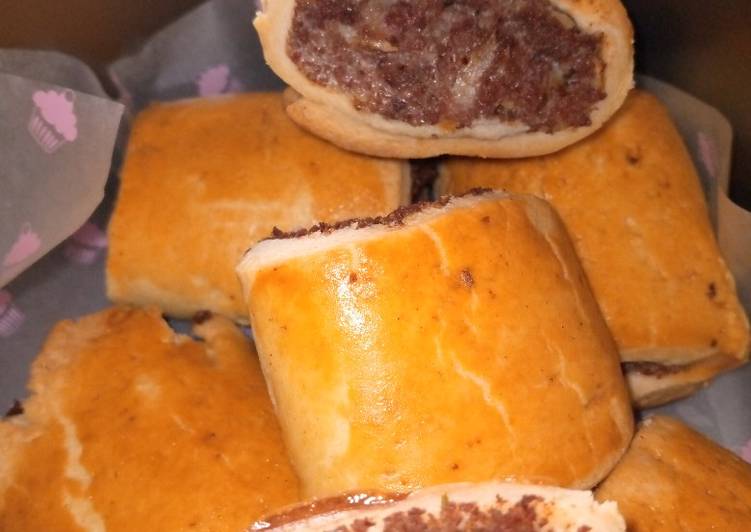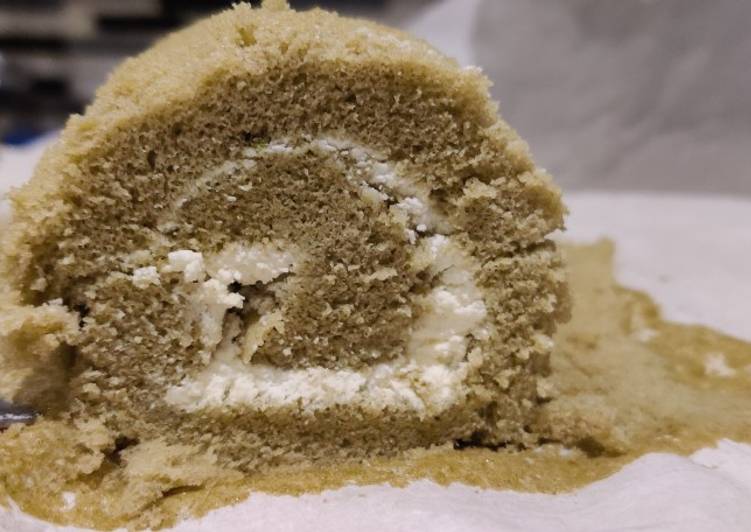
Hello everybody, hope you are having an incredible day today. Today, I will show you a way to prepare a special dish, victoria sponge cake. One of my favorites. This time, I’m gonna make it a bit unique. This will be really delicious.
A Victoria Sponge was the favorite sponge cake of Queen Victoria, and has since become a tried-and-true recipe for tea-time sponge cakes. Victoria Sponges are generally filled with jam, and are undecorated on the top, but you can serve each piece with a dollop of whipped cream, or shake some powdered sugar over the top if you'd like. Probably the most iconic British cake, a good Victoria sponge should be well-risen, moist, and as light as air. Serve dusted with sifted confectioners' sugar.
Victoria sponge cake is one of the most well liked of recent trending foods in the world. It’s simple, it’s quick, it tastes yummy. It’s appreciated by millions daily. They are fine and they look wonderful. Victoria sponge cake is something that I have loved my whole life.
To get started with this particular recipe, we have to first prepare a few ingredients. You can have victoria sponge cake using 4 ingredients and 6 steps. Here is how you can achieve it.
The ingredients needed to make Victoria sponge cake:
- Get 5 whole eggs
- Take 3/4 cup (5 oz) - 65g sugar
- Make ready 5 oz - 150g all purpose (plain) flour (plus a little extra for cake pan)
- Take 1/4 cup - 40g salted butter (plus a little extra for greasing)
To mark Royal Garden Parties, Buckingham Palace Pastry Chef's are delighted to share this traditional recipe. If you use social media, remember to share your #royalbakes ! Mary Berry's easy Victoria sponge cake recipe is a baking classic and a tasty tea-time treat. The Victoria sponge is flavorful enough that it can be enjoyed comparatively unadorned.
Instructions to make Victoria sponge cake:
- Step 1 - Pre-heat your oven to 375°F – 190°C, Melt the butter (not hot) and keep aside.
- Using an electric mixer (or a hand whisk) add the whole eggs to the mixer bowl. Add the sugar and whisk until it becomes thick in consistency and a light cream colour.
- Step 5 - Place all the flour into a fine sieve above the mixer bowl, give it a few shakes then gently fold the flour on the surface into the egg mixture. Repeat that five or six times. Once the flour has been incorporated, add the butter all at once and continue to gently fold.
- Step 6 - Place the mixture into your cake pan and drop it on the bench a few times to remove any air bubbles, 5 or 6 times should be enough. Don’t tap it too many times or you will lose all the fluffiness.
- Place in oven and bake at 375°F – 190°C for 25-30 minutes. Note if using a convection oven, turn temperature down to 320°F – 160°C after 15 minutes.
- Once cooked place a cooling rack onto, flip upside down and remove cake pan immediately using a kitchen towel. It should drop out easily, don’t use a knife.
Mary Berry's easy Victoria sponge cake recipe is a baking classic and a tasty tea-time treat. The Victoria sponge is flavorful enough that it can be enjoyed comparatively unadorned. Queen Victoria's cakes, and even those of my childhood, would have been sandwiched only with jam, with a dusting of sugar over the top. The Victoria Sandwich (named after Queen Victoria) was originally shaped in a long loaf, filled, and cut into fingers or "sandwiches." It has become the quintessential round cake that every English homemaker has had in her repertoire from the time of its royal debut, both the original and, in the decades since, countless versions and incarnations. To take your cakes out of the tins without leaving a wire rack mark on the top, put the clean tea towel over the tin, put your hand onto the tea towel and turn the tin upside-down.
So that is going to wrap it up with this exceptional food victoria sponge cake recipe. Thanks so much for your time. I’m sure that you will make this at home. There is gonna be more interesting food at home recipes coming up. Remember to save this page in your browser, and share it to your loved ones, friends and colleague. Thanks again for reading. Go on get cooking!

